100 pc of households in GCC countries
The data released by the Statistical Centre for the Cooperation Council for the Arab Countries of the Gulf (GCC-Stat) indicate that the proportion of the population living in households with access to safe drinking water and electricity services reached 100perent, which is higher than the global rate of 91perent.
The percentage of education in primary schools adapted for people with disabilities reached 100perent, compared to the global rate of 50perent, while healthcare coverage reached 72perent, compared to the global rate of 68perent (despite variations in rates among GCC countries).
GCC is giving young people a central role in their future?
Harnessing the energy and drive of younger generations will be the key to our future, especially in regions of the world with growing youth populations. This includes the Gulf Cooperation Council (GCC) countries – Saudi Arabia, Qatar, the United Arab Emirates (UAE), Bahrain, Oman and Kuwait – where more than 50perent of the people were under 25 years of age as of 2021.
Recognizing the enormous potential of this vibrant and dynamic youth population, the GCC is working to address challenges in youth education, training and employment in the wider Middle East and North Africa (MENA) region, as outlined in this UNICEF report. By doing so, its children and youth will be equipped with the skills and opportunities to match their aspirations.
A recent PwC survey showed that 65perent of youth in the Middle East have strong faith in their governments as drivers of positive change. That is borne out by the ambitious youth development strategies put in place across the region.
GCC economy in 2025
The GCC economies are projected to grow by 3.2 percent in 2025 and accelerate further to 4.5 percent in 2026, according to the World Bank’s Gulf Economic Update released in June 2025. This is a steep rise from 1.7 percent growth in 2024. It is due to the combination of easing oil supply restrictions, non-oil sector expansion, and fiscal policies. But the report cautions that while economic prospects are improving, this momentum will depend on how well governments implement fiscal policies, invest in high-impact sectors, and maintain macroeconomic stability amidst uncertain global trade and tariff environment.
India-Oman FTA
In recent years, India’s ties with GCC countries have expanded significantly in both the economic and strategic sphere. People to people linkages between India and the Gulf are an important component of the relationship, since the region is home to a large population of Indian expats. According to estimates, over 9 million Indians reside and work in the Gulf. Indians in the Gulf account for well over 60perent of Non-Resident Indians (NRI’s) globally. Linkages between India and the Gulf, however, are multilayered and no longer limited to a singular sphere. Both sides have re-oriented their approach as a result of the massive economic and geopolitical shifts which have taken place – globally, in the Middle East and in South Asia.
UAE economy to grow 5pc in 2025
The UAE economy will grow five perent this year and four perent over the next two years, according to forecasts by Standard Chartered.
The global bank’s growth forecast for this year is higher than the Central Bank of UAE’s projection of 4.4 perent for 2025, but less than 5.4 perent predicted for the next year.
Dubai department of economy and tourism hosts media event
The Dubai Department of Economy and Tourism held a media event on June 23 to share the latest updates.
In 2024, the number of visitors staying overnight in Dubai reached 18.72 million, a 9perent increase from the previous year. The first quarter of 2025 saw a continuation of growth with 5.31 million visitors, a 3perent increase from the same period last year. Additionally, the aspects of safety, comfort, and experience were described with the keyword “casual”. According to a study by the American travel insurance comparison site Insure My Trip, Dubai was selected as the top city for solo female travelers.
Shahab Shayan, the Director of International Operations for the Asia-Pacific region, positioned the Japanese market as a “key market,” with dedicated teams in Tokyo and Osaka to cater to a wide range of needs from luxury to affordability and business.
Oman’s manufacturing moment
Oman stands at a pivotal juncture in its economic journey—a moment that demands bold, strategic decisions to shape long-term prosperity.
For decades, the nation’s growth was anchored by its hydrocarbon resources, which provided essential revenue and enabled major infrastructure development. However, as global dynamics evolve—marked by shifting supply chains, digital disruption, and the climate transition—it has become clear that a new engine is needed to drive sustainable development.
Vision 2040 provides that roadmap, emphasising economic diversification, resilience, and international competitiveness. Among all sectors, manufacturing emerges as the most critical lever to deliver on these ambitions. It is not simply one industry among many; it is a force multiplier that catalyses growth across the economy, generates skilled employment, accelerates technology adoption, and enables Oman to transform raw materials into high-value exports.
Bahrain’s economy grows 2.7pc in q1 2025
Bahrain’s real gross domestic product grew by 2.7 percent year on year in the first quarter of 2025, supported by a 2.2 percent increase in non-oil activities, according to official data.
The Ministry of Finance and National Economy revealed in its quarterly report for the first quarter of 2025, steady economic expansion was driven by robust non-oil sector performance and rising foreign investment.
Preliminary data from the Information and eGovernment Authority also showed a 5.3 percent rise in the oil sector. In nominal terms, GDP expanded by 3 percent, with non-oil and oil sectors growing by 2.8 percent and 4.6 percent, respectively. The non-oil division remained the dominant force, contributing 84.8 percent to real GDP.



